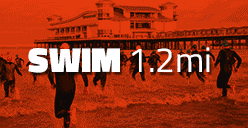In case you missed it see what’s in this section
Let's Talk
AS THE SUN SHINES REMEMBER TO STRENGTHEN YOUR RUNNING
With the summer season in full flow, runners are out in force enjoying the fresh air and beautiful views but there are still reasons they should be encouraged to keep to a training routine in the gym.
Regular strength training supplements a runner’s road work because it strengthens muscles and joints, which can improve race times and decrease injury risk. If you are a runner and want to perform at full potential, you need to take a comprehensive approach to running. Adding strength to running routines, even one or two times per week, can actually be very beneficial to training.
Although it’s easy to say to those who prefer to train in the great outdoors, that it’s beneficial to include some indoor strength training, the gym can be an intimidating place for beginners, the unfamiliar or deconditioned. So, to ease your fears, let me try changing your view on why and how weight training is important and what it can do for you. Remember as a runner, you are training for strength, not to ‘bulk up’ with massive muscle gains. And because of the number of miles you are putting in weekly, the chances that you would achieve a large increase in muscle mass are low.
Below is a gym-based weight training and conditioning routine, the exercises are selected to help support runners get into the gym regularly, many of the groups of exercises are set up to create mini circuits and could be used in Small Group Training with friends too.
Warm-up
- Up and down dog mobility
- World’s greatest running stretch with the rotation of arm to the ceiling
- Airplane balance pose to knee lift
- Rowing for 5mins working up to an intensity of 7/10 of effort
- SPM 22-26
- 1a, Walking Lunges weighted 15 meters
- 1b, Skipping Rope 60 seconds
- 1c, Side Plank 30 seconds each side
- 2a, Single Leg Deadlift 10 reps each side
- 2b, Battle Rope Alternating Waves 60 seconds
- 2c, Hanging Leg Raises x20
- 3a, Hip Thrusts 10 reps
- 3b, Cable Pallof Press 10 reps each side
- 3c, TRX Leg Extension 15 reps each leg
- 4a, Prowler Push 15 meters out and back
- 4b, Kettlebell Sumo Squat 20 reps
- 4c, TRX Hip Drop 10 reps each side
Bike training:
- 1 min @ Zone 3 of your Training Zone
- 1 min @ Zone 4 of your Training Zone
Repeat x 5
Cooldown
10mins of a steady riding in a low effort zone with an RPM of 80-90.
During the workout, the focus should be on strength work so ensure you use enough weight to challenge yourself and feel like the intensity is hard work.
It can take you a full day or two to recover from resistance training, which could be new to you in comparison to the recovery time after a run.
Even keen runners need to vary their training – in the long run, it will help to improve their overall performance. This is especially important for adults, who spend a lot of time sitting outside of their running schedule like in cars or desks. Regular strength training—especially for the legs—can help to correct muscle imbalances and weaknesses that are common in modern life.
It is important to not skip the strength training, stretching and injury prevention work but to maximise your potential needs to provide a more considered plan rather than just hitting the pavements all the time.
Stretching the benefits
Stretching has been a hot topic of debate for runners in recent years. There is no evidence that static stretching prevents injury or improves performance. In fact, you are inhibiting a neuromuscular contraction, so it’s not going to fire as quickly to tell the muscle to respond and perform. That leads to less reaction and in effect a slower response, so your speed will go down.
When it comes to staying injury-free, a functional range of motion is more important than flexibility. That’s where dynamic stretching, movement preparation, and rolling comes into importance.
Time better spent would be warming up with dynamic stretching for about 10minutes, and this could be a combination of movement and progressive exercise as in the sample workout above, or you could choose to roll key muscles in preparation too.
My personal preference is to take 3-4 yoga moves and put them into a flow where I get the joints mobilised and muscles lengthening through a progressive range. I can also add focus to each position my body is in and pause while I breathe into the movements allowing my mind and body to connect with how they feel about this preparation. If I find myself holding my breath or restricting it then I’ll move out and back into the position to see how it responds. If it feels better - great - I might challenge the range more but if not, I’ll reduce the range and be mindful about what might be feeling stiff so I don’t challenge it as much.
Stretching After Running
It is also important to stretch afterward. If you have an area that still feels tight like calves, hamstrings, hip flexors, around the hips and quads tend to be tight after running a similar cool-down routine may be best. During this, I might pause in similar positions and hold them a little longer while breathing, again seeing if I can release tension, but also roll using a ball or cylinder roller to release tension and increase recovery through an area.
Benefits of rolling
- Enhanced circulation and blood flow, particularly to extremities
- By stimulating blood flow, dramatically more oxygen is delivered to sore muscles
- Relaxation and the promotion of a feeling of well-being
- Removal of scar tissue or muscle adhesions in the fascia that limits mobility
- Reduction in stress hormones and inflammation
- Better range of motion
Rollers can be purchased in many styles and with everyone having different pain thresholds be sure to understand that pain isn’t good. You should be able to breathe as you roll and if this is difficult then take some weight off the roller and onto the floor with another hand or foot. You might find that a deeper role is your preference and rumble rollers or spiked balls to really work your area could be great.
Weather in Bristol
Listings


















